Lakefield (Middlethird)
Houses within 10km of this house
Displaying 70 houses.
Houses within 10km of Lakefield (Middlethird)
Displaying 70 houses.
| House name | Description | |
|---|---|---|
| Anner Castle | Marked on the first Ordnance Survey map as Ballina House, this residence of the Reverend Nicholas Manderville was valued at £46+ and held by him in fee in the early 1850s. Bence Jones writes that Anner Castle was built in the 1860s "incorporating the old square castle of the Manderville family which had up till then been known as Ballinahy". It was destroyed by fire in 1926 and only the front portion was rebuilt. The Mandervilles were still resident in the 20th century. This property was sold in 2013. |
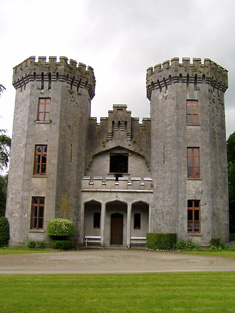
|
| Haywood | A house situated on the northern outskirts of the town of Clonmel, the home of Charles Riall in the first half of the 19th century. It appears to straddle the parish border between Rathronan and St Mary's Clonmel. The residence of John Riall in the 1870s. The site is now occupied by a shed. | |
| Anner Ville | Anner Ville was the home of Pierce A. Butler in 1814 but by 1837 was in Riall possession. The Ordnance Survey Name Books describe it as "handsomely situated, having a garden, orchard and ornamental ground attached". At the time of Griffith's Valuation Samuel Riall held the house valued at £23.14 shillings from Barclay Clibburn junior. Anner Ville continued to be a Riall residence in the 1870s and is still a fine home. |

|
| Redmondstown | In 1814 Redmondstown was the residence of J. Parson Ducket and in 1837 of a member of the Quinn family. In the early 1850s R.G. Fitzgerald was the occupier, holding the house valued at £16.15 shillings from the Earl of Glengall. This house is still extant and is located in a wooded area. Thomas Albert Quin of Redmondstown owned 612 acres in the 1870s. | |
| Shanballyard | Shanballyard House is marked on the first Ordnance Survey map. In the mid 19th century John Scully held buildings valued at £16+ and 299 acres from James Scully. The National Inventory of Architectural Heritage records this house as "disused". |
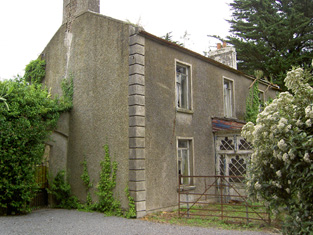
|
| Silver Spring House | This building was originally a charter school. By the mid 19th century it was occupied by Charles Bianconi, valued at £16 and held from Mrs Putland and Sir Charles Hulse. Mrs Anne Moore lived here in the 1870s. It is no longer in use. |

|
| E.T.M. Ville | E.T.M. Ville, Clonmel was occupied by E.T.M. Butler [Edmond Theobald Mandeville Butler] in 1814 and by his widow Mrs Eliza Butler in the mid 19th century. The house was then valued at £13 and held from the Putland/Hulse estate. Some buildings remain at the site. | |
| Anner Park | In 1837 Lewis records the extensive flour mills and residence of Barclay Clibborn in the parish of Kilgrant. In 1840 the Ordnance Survey Name Books describe the townland of Twomilebridge as " a demesne, consisting of planted ornamental ground, gardens and orchard". In the mid 19th century Barclay Clibburn occupied a house valued at £22 and held from the Putland/Hulse estate. Joseph Clibburn of Two mile bridge owned 20 acres in the 1870s. William Clibborne was resident in 1906 when the house was valued at £30+. This house is still occupied and well maintained. |
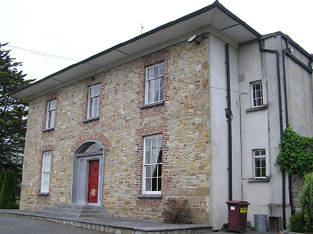
|
| Ballyvaughan | The Bushell family were located at Ballyvaughan from the 18th century. The will of Edward Bushell of Ballyvaughan dated 30 July 1778 names his six sons. At the time of Griffith's Valuation Samuel Bushell held buildings valued at almost £13 from John Lindsey. http://www.igp-web.com/IGPArchives/ire/tipperary/wills/bushell01.txt | |
| Kilheffernan/Cottage | Thomas Ryan was the proprietor of Cottage, Clonmel, in 1814 and Lewis records T. Ryan of Cottage, parish of Killaloan. At the time of Griffith's Valuation Patrick Fennelly held the house valued at £10.13 shillings from Thomas Ryan. Altered over the years this house is still in use as a residence. |
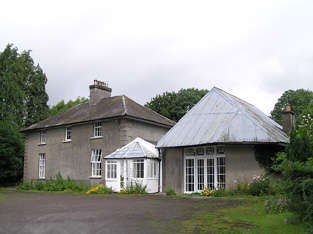
|
| Newtown Anner | The seat of the Osborne family, held by R.B. Osborne MP in fee in the mid 19th century when the buildings were valued at £56+. Inherited by 12th Duke of St Albans, grandson of R.B. Osborne. Occupied by the Duchess of St Albans in 1906 and still in this family's possession in the early 1940s. The Irish Tourist Association survey states that the Osbornes bought the property from Clonmel Corporation in 1774. The National Inventory of Architectural Heritage dates this house 1829. It continues to be in use as a residence. |
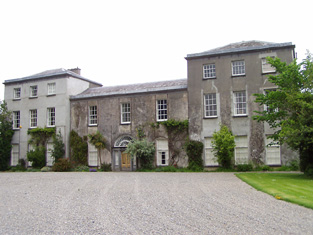
|
| Ballingarrane | Ballingarrane was originally leased and then purchased in the late 18th century by Solomon Watson, banker of Clonmel. He built Summerville House which later became known as Ballingarrane. W. H. Bradshaw occupied the house in 1837 and John Mulcahy in the mid 19th century when the buildings were valued at £25+ and held from Solomon Watson. The Watsons occupied the house again in the second half of the 19th century and family members were still resident in the late 20th century. |

|
| Glenconnor | This house also know as Larchfield was built by Solomon Watson at the end of the 18th century as a dower house for Summerville (Bence Jones). Leet records Larchfield as unoccupied in 1814. J. Bagwell was resident at Glenconnor in 1837 and Pierce Gough in the early 1850s when the house was valued at £23.10 shillings. Alderman William Byrne of Clonmel was resident here in the 1870s. Additions were made to the house in the 1880s and it was owned by a Colonel George Elliot in the early 20th century who sold it in 1938 to H.J.Cleeve. |

|
| Barn | The seat of the Moore family in the 18th, 19th and 20th centuries. In 1786 Wilson refers to it as the seat of Thomas Moore In 1840 the Ordnance Survey Letter Books note that it had "a garden nursery and ornamental ground". It was held by Stephen Moore in fee in the mid 19th century and valued at £49+. Randal K. Moore was resident in 1906 and Mr and Mrs Murray Moore in the early 1940s when the house contained a very fine library and antique art collection. Barn is still extant. |

|
| Knockeevan/Darling Hill | William Pennefather (died 1819) of Knockeevan was the second son of Richard Pennefather of New Park. Knockeevan became the home of his eldest son, Richard, Baron of the Exchequer, Ireland, who employed William Tinsley as architect in the mid 1820s. The house was originally known as Darling Hill and it belonged to the Carleton family in the 18th century. Wilson refers to it as the seat of Mr. Carleton in 1786. Oliver Carleton sold it to the Pennefathers in 1782. The house was held by the Honourable Baron Pennefather in fee at the time of Griffith's Valuation when it was valued at £54+. It later passed into the possession of Lady Emily Hankey, daughter-in-law of Baron Pennefather and then to the Stanhope family. Sold by the Stanhopes in the late 19th century or early 20th century. This house no longer exists. see http://www.dia.ie/architects/view/5338#tab_works concerning the architect. |
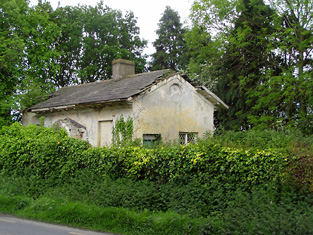
|
| Orchardstown | The home of the Hamerton family in the 19th century, occupied by John Hamerton in 1814. Mathew Hamerton was the occupier in the early 1850s holding the house from Major William M. Hamerton. The buildings were valued at £18+. | |
| Rathronan House | A property granted to John Walsh in 1679. Lewis describes this house as the "elegant residence of Major General Sir Hugh Gough". Viscount Gough was still resident in the mid 19th century when the buildings were valued at £47+ and held from Major William M. Hamerton. This property was in the possession of the Whalley family in the late 19th century. A house is still extant at the site. | |
| Ballyknockane | Marked on the first Ordnance Survey map as Ballyknockane Cottage, valued at £21 and occupied by Walter Asper at the time of Griffith's Valuation. He held the property from the Marquess of Ormonde. In 1894 Slater noted it as part of the latter estate. This building no longer exists. | |
| Melview | A house on the outskirts of Clonmel, occupied by Robert Malcomson in the mid 19th century, held from John Bagwell and valued at £52. This building now functions as a nursing home. |

|
| Powerstown | The residence of George Green in 1814 and in the early 1850s when the buildings were valued at £26+ and held from Mrs Putland and Sir Charles Hulse. This house no longer exists. | |
| Ballyboe | A house valued at £17+ in the mid 19th century when it was occupied by James O'Donnell and held from Lord Lismore. This house is still a family residence. |

|
| Rathduff | A house occupied by Thomas Kennedy and held from the Reverend John W. Hackett and partners in the mid 19th century when the buildings were valued at £16.15 shillings. | |
| Kilburry | The home of Jeremiah Meagher in 1814 and of Robert Maher in the mid 19th century. He held the house valued at £16.15 shillings from William Beasley. Buildings are still located at this site. | |
| Knockanglass | This house was the home of James Riall in the early 1850, who held the property from K.Pennefather. The buildings were valued at £18.15 shillings. The National Inventory of Architectural Heritage states that this house was associated with the Langley family and was sold to the O'Dwyers in 1912. It was occupied by Adelaide Langley in 1906. It still functions as a residence. |
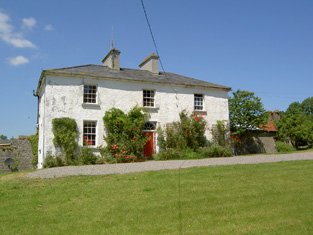
|
| Moglass House | Moglass valued at £11 was held by John Riall from George Riall at the time of Griffith's Valuation. It is described as "in ruins" on the 25-inch Ordnance Survey map of the 1890s. | |
| Clonacody | The residence of John Hunt in 1814 but the Kelletts were resident by 1837. The Ordnance Survey Name Books refer to Clonacody as the seat of John D. Kellett. James Sadlier was the occupier in 1850 holding the house valued at £28+ from John Kellett. The sale rental of 1856 records James Sadlier as tenant under the Court of Chancery in a case Massey v Kellett. The Kellett family continued to live at Clonacody until the mid 20th century and the house is still extant. |
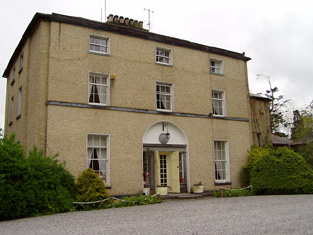
|
| Cloneen House | The home of the Meagher family, occupied by William Meagher in 1814 and by Henry C. Meagher in 1850. The property was held from the Earl of Clare and was valued at £18. This house is still occupied. |
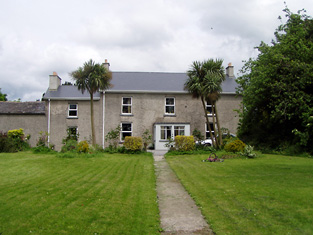
|
| Bannixtown | A Clutterbuck home from at least the 1770s, Richard Clutterbuck was resident at Bannixtown in 1814. On the first Ordnance Survey map circa 1838 Bannixtown house is recorded as "in ruins". In 1840, though, the Ordnance Survey Name Books mention Bannixtown as a large farmhouse. The 25-inch map shows a building labelled "Bannixtown House" at the same site. A house valued at £19 was occupied by John Shea at Bannixtown in the early 1850s and held from the representatives of Thomas Clutterbuck. John Shea of Bannixtown owned 254 acres in the 1870s. | |
| Grove | A mid 18th century house which was altered in the 1830s. Grove was the seat of the Barton family, mentioned by Wilson as the seat of William Barton in 1786. It was occupied in 1814 by Thomas Barton and by William Barton in 1837. The Ordnance Survey Name Books describe it as "a very large dwelling house with extensive offices" in 1840. At the time of Griffith's Valuation, William Barton held Grove in fee and it was valued at £69. Grove remained in the possession of the Barton family until the mid 20th century when it passed to the Ponsonby family. This house is still extant and occupied. |
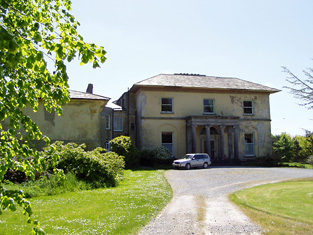
|
| Hamilton Abbey | Hamilton Abbey is described in the sale rental of 4 June 1850 as "old fashioned" but "a most romantic and elegant residence". It contained a "fine cellarage, servants apartments and offices, large sized hall, breakfast parlour, dining rooom and drawing room, ten bed chambers, dairy, pantries, etc." and was in the possession of W.H. Latham. It was valued in Griffith's Valuation at £15.3 shillings. This property appears to have originally belonged to Hamilton Lowe. The ''Limerick General Advertiser'' of 16 May 1820 records the giving of the nearby Augustinian Abbey at Fethard to the Reverend Thomas Condon, Prior, by Mrs Hamilton Lowe and W. Latham. |

|
| Lowesgreen | Lowesgreen was the home of Richard Butler Hamilton Lowe in the 1780s. By 1814 Benjamin Bradshaw was resident here and Mrs Hannah Carey was occupying the house in the mid 19th century when it was valued at £16+ and held from Robert [Richard] B. Lowe. The Newenham sale rental of 1865 records Solomon Watson as tenant and representative of Hamilton Lowe who had been granted a lease for lives renewable for ever from John Newenham in 1753. A house is still extant at this site. | |
| Kiltinan | Kiltinane Castle was the seat of the Cooke family in the 18th and 19th centuries. Lewis describes the castle as the seat of R. Cooke, it "consists of an ancient circular tower .... and a residence erected on the old site by the late E. Cooke". In the mid 19th century the buildings were valued at £38+ and held by Robert Cooke in fee. Noted by Slater in 1894 as the seat of Robert Cooke. Sold by the Cookes in the 1920s to Mrs le Terrier, Kiltinan Castle now belongs to Andrew Lloyd Webber. |
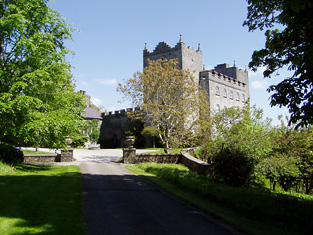
|
| Westgrove | Arthur Riall was residing at Westgrove in 1837 and in 1850 when the house was valued at £23+ and held from Robert Maunsell. This house is still in use as a residence. |
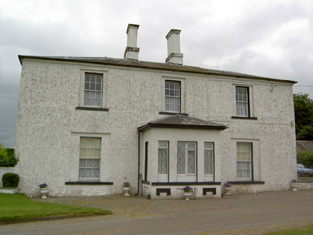
|
| Donegal | John O'Halloran occupied Donegal House in the mid 19th century which he held from Arthur Riall. The buildings were valued at £12.18 shillings. This house no longer exists but a farm complex is still located at the site. | |
| Mobarnan | Mobarnan was the seat of the Jacob family in the 18th and 19th centuries. Occupied by Samuel Jacob in 1814, M. Jacob in 1837 and by Samuel Jacob at the time of Griffith's Valuation. He held the property in fee and the buildings were valued at £37+. Later the home of the Tennant family. This house was enlarged in the early 19th century and is still in use as a residence. In the 1970s it was owned by Major Marcus William Keane, formerly of Beech Park, and his wife, Anne R. Armitage of Noan, Co Tipperary. |
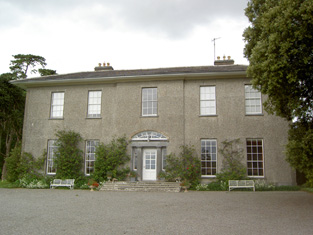
|
| Peppardstown | The home of members of the Henderson family in 1814 and in 1850 when Samuel Henderson held a house valued at £10.14 shillings from Matthew Jacob at Peppardstown. In the mid 1870s Jerome James Guiry was living at Peppardstown, Fethard and the Guiry family were still resident in the early 21st century. The National Inventory of Architectural Heritage dates the present Peppardstown house from circa 1870. Beatrice P. Saunders was occupying the mansion house at Peppardstown in 1906. |

|
| Garraun | In the early 1850 John O'Meagher occupied a steward's house at Garraun which he held from - Stratford. The buildings were valued at £12+. A farming enterprise is still located at this site. | |
| Maginstown | A house valued at £13+ in the townland of Maginstown was occupied by James O'Donnell at the time of Griffith's Valuation and held from William Fennell. Buildings are still located at this site. | |
| Annesgift | This house was the home of the Glenstanes. In 1814 Anne Glenstanes daughter of John Jacob Glenstanes married Wray Palliser and the house passed into Palliser ownership. Annesgift was occupied by George Ponsonby in 1814, by Major Gough in 1837 and by Colonel W. Palliser and George Ponsonby at the time of Griffith's Valuation. They held the property in fee and the buildings were valued at £32+. This house was occupied by the Hughes family in the first half of the 20th century and is now converted into apartments. |
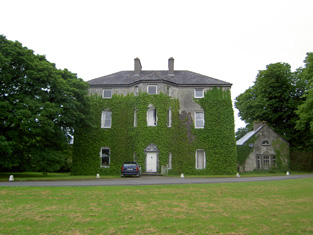
|
| Ardsallagh | The home of George Gough in the first half of the 19th century. It is described in the Ordnance Survey Name Books in 1840 as "a gentleman's residence with garden's attached and surrounded with ornamental grounds". It was valued at £37.12 shillings in 1850 and held from George Fennel. In the 1870s Colonel George Frend of Ardsullagh owned 100 acres in county Tipperary. Still in use as a country house. |

|
| Coolmore | The seat of the Sankey family in the 18th and 19th centuries, Coolmore was recorded by Wilson as the seat of Mr. Sankey in 1786. It was occupied by John Butler in 1814, by Matthew Villiers Sankey in 1837 and by Jacob Sankey in 1850. He held the property in fee and the buildings were valued at £37.15 shillings. In the second half of the 20th century Coolmore became a world famous stud for the breeding of race horses. The stud was set up in the late 1960s by Tim Vigors and continued by Vincent O'Brien, Robert Sangster and John Magnier. |
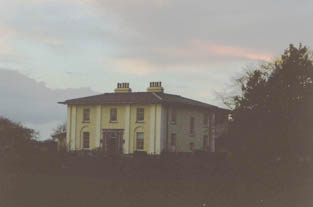
|
| Derryluskan | The Pallisers were resident at Derryluskan from at least the mid 18th century. John Palliser was the proprietor in 1814 and Mrs Palliser in 1837. Their son Colonel Wray Palliser was the occupant at the time of Griffith's Valuation. He held the property from Colonel Gore and the buildings were valued at £45.17 shillings and held with a demesne of 682 acres. The Pallisers were still residing at Derryluskan in the 1870s. The house has been greatly reduced in size but still functions as a residence. |
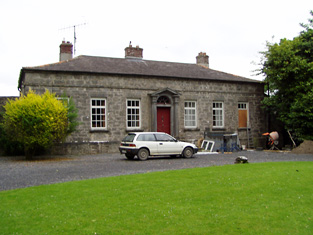
|
| Rathcool | Blake Esq was resident at Racool in the 1770s. In 1840 the Ordnance Survey Name Books describe Rathcool as "a castle apparently inhabited. There is another dwelling house attached with a garden". In the mid 19th century Rathcool Castle was occupied by Charles Blackmore and held from the representatives of L. Clutterbuck. The buildings were valued at £16.13 shillings. Charles Blackmore was still residing at Rathcool in the 1870s when he is recorded as the owner of one acre in county Tipperary. Rathcool is still in use as a house. |
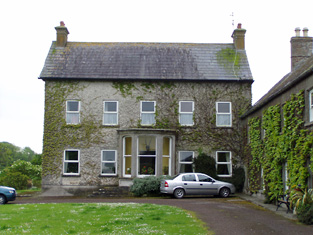
|
| Rocklow | Taylor and Skinner records Rocklowe as the residence of Lowe Esq in the 1770s. Rocklow was the home of Benjamin Frend and his wife, Eliza Gough, in the first half of the 19th century. Benjamin was resident there from at least 1814 to the 1850s. Griffith's Valuation records that it was held from Hugh Barton and was valued at £37+ in the early 1850s. This house later belonged to the Massys and is still in use as a residence. In 2022 it was offered for sale. |
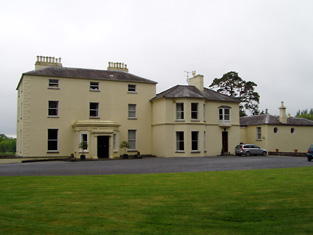
|
| St Johnstown | St Johnstown originally belonged to Matthew Jacob, whose only daughter and heir married Richard Pennefather of New Park in 1782. Wilson refers to it as the seat of Mr. Jacob in 1786 but their second son Matthew J. Pennefather was resident at St Johnstown in 1814. In 1837 Lewis records St Johnstown Castle as "consisting of a high square tower in good preservation, [it] is the property of James Millet Esq who has a modern house in its immediate vicinity". The buildings were valued at £31+ in the early 1850s, James Millet was still the occupier holding the property from Stephen C. Moore. | |
| Tullamain Castle | Tullamaine Castle was the home of John Power, father of the 1st Sir John Power, Baronet. Leet records J.D. Scully as resident at Tullaghmain-castle, Fethard, in 1814. This was James Scully (1779-1853), fourth son of Jeremiah Scully of Silverfort. By 1837 Lewis records John Maher as resident though the Ordnance Survey Name Books in 1840 refer to the proprietor as a Mr. Walsh. By the time of Griffith's Valuation Maher is recorded as holding the property in fee. The buildings were valued at £44.16s. By the mid 1870s Tullamaine Castle belonged to Henry Maynard Harding who advertised it for sale in July 1880. Slater still refers to it as his property in 1894. Dr M.J. Barry was resident at Tullamain in 1906. The castle was burnt in the early 1920s but rebuilt and is still a country residence. In the early 1940s C. A. Vigours was resident. |
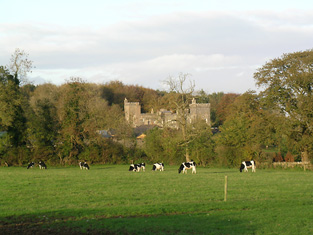
|
| Clonbrogan | An early 18th century house built by Solomon Watson, the residence of M. Watson in 1814. By the time of Griffith's Valuation John Murphy was the occupier holding the house from Jeremiah Scully. It was valued at £5.14 shillings. This house is still a residence. |
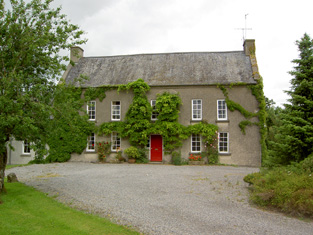
|
| Tikincor Castle | Tickincor Castle, a fortified house, is described as "in ruins" on the first edition Ordnance Survey map in 1840. Buildings at the site were valued at £7 18s at the time of Griffith's Valuation in the 1850s when they were owned by Ralph B. Osborne and leased to Thomas Prendergast. In 1777 Smith notes that Tickencore was the property of Sir William Osborne. |

|
| Ballinattin | In 1786 Wilson refers to "Ballattin" as the seat of Mr. Parsons. This house valued at £17+ in the mid 19th century was occupied by Thomas Cooney and held from William Moore. A farm exists at the site and the original house is not extant. | |
| Ballinattin House | Occupied by Denis Cooney at the time of Griffith's Valuation, valued at £13+ and held from Edward B. Vise. This house is still extant and occupied. | |
| Kilgainy | In 1850 Ralph Osborne was leasing this property to Henry Pedder when it was valued at £18 5s. It is labelled Kilgainy on the 25-inch Ordnance Survey Map of the 1890s. It is no longer extant. | |
| Poulboy Mill House | Winifred Daniel was leasing this property from the Osborne estate at the time of Griffith's Valuation, when it was valued at £13 10s. The adjacent mill, valued at £42, was being leased by her to Patrick Corcoran at the same time. By the 1880s the mill is no longer visible. | |
| Spring Field (Clonmel) | Francis Prittie was leasing this property from the representatives of E. Labarte in 1850. It was then valued at £32 10s. It is still extant and occupied. |
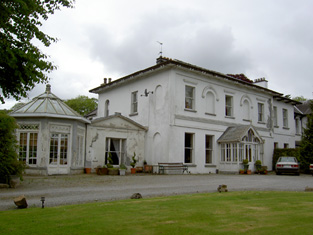
|
| Merlin | In 1850 Abraham Grubb held this property in fee when it was valued at £54. Merlin is still extant and occupied. |

|
| Rose Ville (Clonmel) | At the time of Griffith's Valuation, Mrs. Anne Murray was leasing this property from Abraham Grubb when it ws valued at £33. The National Inventory of Architectural Heritage states that it was designed by Tinsley for the Murray family. Rose Ville has been in use as the Loreto convent since 1881. |

|
| Ashbourne (Clonmel) | In 1850 William Davis was leasing this property from Abraham Grubb when it was valued at almost £36. The National Inventory of Architectural Heritage indicates it was designed by William Tinsley for the Davis family. It is still extant and occupied. |
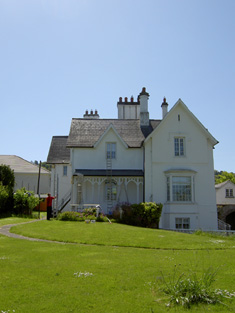
|
| Fairyhill House (Clonmel) | Leased by Thomas Hughes to David Franks at the time of Griffith's Valuation in 1850 when it was valued at almost £27. Fairy Hill is still extand and occupied. |

|
| Raheen House (Clonmel) | Held in fee by Mrs. Elizabeth Greer at the time of Griffith's Valuation, when it was valued at over £55. It was offered for sale in September 1878 on behalf of William Greer, described as a lunatic, by his guardians. | |
| Little Island | This house was situated on an island in the Suir River in the southern part of Clonmel town. It was the home of the Morton family in the 19th century but is no longer extant. The Reverend James Morton held the house valued at £42 from his father Samuel at the time of Griffith's Valuation. | |
| Minella | This house was built by the Malcomsons in 1863, now a hotel located in county Waterford. http://www.hotelminella.ie/ |
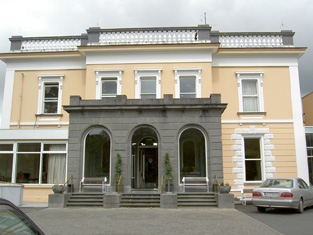
|
| Summerhill | Summer-hill, Clonmel, was the residence of the Reverend George Mills (sic) in 1814. The house was valued at £15+ in the mid 19th century, occupied by Mrs Dorothea Moore and held from the representatives of the Reverend Miles. In the 1870s Dorothea Moore of Dublin owned 288 acres and Henry Moore of Summerhill, Clonmel owned 247 acres in county Tipperary. Lewis refers to the handsome residence of R. Moore in 1837. |

|
| Milltown House | In the mid 19th century Henry Briscoe was occupying a house valued at £10.19 shillings and held from Captain Richard Long. This house is still extant. | |
| Knockkelly | In the mid 19th century Richard Crane held a house valued at £12+ from William Barton in the townland of Knockkelly. This appears to be the house marked as Knockkelly house on the first edition Ordnance Survey map. | |
| Redcity | In the mid 19th century William Harney held a house valued at £11+ from Sir John Power in the townland of Redcity. Buildings are still located at this site. | |
| Cloran | A house valued at £10. 11 shillings at the time of Griffith's Valuation, occupied by Miss Mary Kelly and held from the Earl of Clare with 224 acres. A building is still located at this site. | |
| Ballinard Castle | In 1894 Slater refers to Ballinard Castle as the residence of William Tennant. At the time of Griffith's Valuation, John Lindsay owned land in the townland of Friarsgrange, parish of Coolmundry, in which Ballinard Castle is situated. It appears that, in the nineteenth century, a house was built adjoining the original tower house as, in 1840, the Ordnance Survey Name Books refer to Ballinard Castle, a gentleman's seat in the townland of Friarsgrange. Information in the Woodstock Museum, Ontario, Canada, indicates that the building was owned by the Lindsay family until 1926. The building is still extant. |
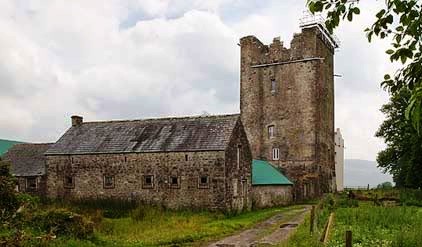
|
| Chancellorstown House | In 1786 Wilson refers to Chancellors' Town as the seat of Mr. Moore. The house and surrounding demesne are shown on the first edition Ordnance Survey map but are not marked on the 25-inch edition of the 1890s. The townland was part of the estate of Stephen Moore at the time of Griffith's Valuation, though the house was leased by the representatives of Joseph Gough to Denis Daly and was valued at £7 10s. Farm buildings occupy the site now. | |
| Brookhill House | In 1786 Wilson refers to Brookhill as the seat of Mr. Lowe. The 1st edition Ordnance Survey map shows Brookhill house, "in ruins", in Farranshea townland, parish of Peppardstown. An old manor house, also in ruins, is shown as well. The Ordnance Survey Name Books, in 1840, describe the site as "two large houses, one having its eastern end and the other, its eastern side, joining the ruins of the Old Manor House". At the time of Griffiths' Valuation, the townland was in the possession of the Hackett estate and the houses are described as "in ruins". The ruins are not shown on the later 25-inch map of the 1890s. | |
| Knockbrack (Fethard) | In 1786 Wilson mentions Knockbrack as the seat of Mr.Letham. The house at Knockbrack, close to the village of Fethard, is described as "in ruins" on the 1st edition Ordnance Survey map. By the time of Griffith's Valuation, the townland was held in fee by William Barton, when the buildings were valued at almost £3. Farm buildings occupy the site of the old house now. | |
| Woodhouse (Middlethird) | In 1841 the Ordnance Survey Name Books refer to Woodhouse, a gentleman's house, the proprietor being Basil Bryan. By the time of Griffith's Valuation, a property at Woodhouse was occupied by Timothy Connolly, who was leasing it from Richard Price. It was valued at £10+. Woodhouse is labelled "in ruins" on the 25-inch edition Ordnance Survey Map of the 1890s. |

